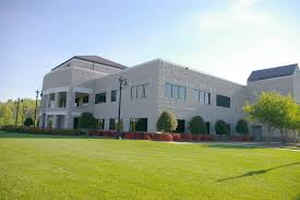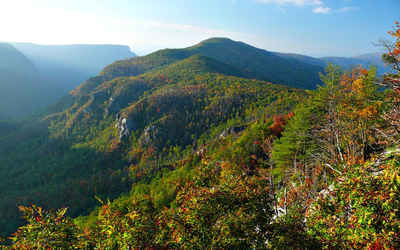North Carolina Counties
North Carolina is divided into one hundred counties. The establishment of North Carolina counties stretches over 240 years, beginning in 1668 with the creation of Albemarle County and ending with the 1911 creation of Avery and Hoke counties. Five counties have been divided or abolished altogether, the last being Dobbs County in 1791.Wilkes County, North Carolina
Wilkes County Education, Geography, and History
Wilkes County is a county located in the state of North Carolina. Based on the 2010 census, the population was 69,340. Its county seat is
Wilkesboro, and its largest town is North Wilkesboro.
Wilkes County comprises the North Wilkesboro, NC Micropolitan Statistical Area.
Etymology - Origin of Wilkes County Name
It was named in honor of John Wilkes who was a violent opponent of the Tory party in England. He was not allowed to take his seat in Parliament to which he had been elected. The Americans imagined that he was suffering in the cause of liberty and named this county in his honor.
Demographics:
County QuickFacts: CensusBureau Quick Facts
Wilkes County History
Wilkes was formed in 1777 from Surry and the District of Washington. The act was to become effective February 15, 1778. It was named in honor of John Wilkes who was a violent opponent of the Tory party in England. He was not allowed to take his seat in Parliament to which he had been elected. The Americans imagined that he was suffering in the cause of liberty and named this county in his honor. It is in the northwestern section of the State and is bounded by Yadkin, Iredell, Alexander, Caldwell, Watauga, Ashe, Alleghany and Surry counties. The present land area is 757.19 square miles and the 2000 population was 65,632. The act establishing the county stipulated that the first court was to be held at the home of John Brown. Commissioners were named to select a place centrally located for the erection of the courthouse, prison and stocks. The second court was held June, 1, 1778, in the "bent of the Yadkin." The next day it was held at Mulberry Field Meeting House. On June 3 the commissioners who were to select a site for the county seat reported as follows: "We, the commissioners appointed by act of Assembly to lay out and appoint pillory and stocks of the said county, have met and materially considered the same, do adjudge and appoint the place where the Mulbury Meeting House stands as the most central, suitable and proper place whereon to locate public buildings." In September, 1778, court was held at the courthouse of Wilkes. In 1795 an act was passed naming new commissioners to select a site for the erection of a courthouse, pillory and stocks. It also named commissioners to purchase fifty acres of land on which to lay out a town and to erect public buildings. By 1801 Wilkesborough had been laid out at the courthouse. In 1823 an act was passed authorizing a new courthouse to be erected on the public square in Wilkesboro. Wilkesboro is the county seat.
Geography: Land and Water
As reported by the Census Bureau, the county has a total area of 757 square miles (1,960 km2), of which 754 square miles (1,950 km2) is
land and 2.6 square miles (6.7 km2) (0.3%) is water.
Wilkes County is located on the eastern slope of the Blue Ridge Mountains, a part of the Appalachian Mountains chain. The county's elevation
ranges from 900 feet (375 meters) in the east to over 4,000 feet (1,219 meters) in the west. The Blue Ridge Mountains run from the southwest
to the northeast, and dominate the county's western and northern horizons. Thompkins Knob, the highest point in the county, rises to 4,079
feet (1243 meters)The foothills and valleys of the Blue Ridge form most of the county's midsection, with some elevations exceeding 2,000 feet
(610 meters). Stone Mountain State Park, located in the foothills of northern Wilkes County, is one of the most popular state parks in North
Carolina, and is noted for its excellent rock climbing and trout fishing. The Brushy Mountains, an isolated spur of the Blue Ridge, form the
county's southern border. Wilkes County's terrain gradually becomes more level and less hilly as one moves to the east; the far eastern
section of the county lies within the Piedmont region of North Carolina. The largest river in Wilkes is the Yadkin River, which flows through
the central part of the county. The county's three other major streams, all of which flow into the Yadkin, are the Reddies River, Roaring
River, and Mulberry Creek. Following the devastating floods of 1916 and 1940, the US Army's Corps of Engineers constructed the W. Kerr Scott
Dam and Reservoir on the Yadkin River four miles west of Wilkesboro. Opened in 1962, the dam created a lake with a shoreline of 56 miles. The
lake is used for boating, swimming, fishing, and waterskiing; it is especially noted for its excellent bass fishing. The W. Kerr Scott lake is
the largest body of water in Wilkes.
Neighboring Counties
Bordering counties are as follows:
- Alexander County (south)
- Alleghany County (north)
- Ashe County (northwest)
- Caldwell County (southwest)
- Iredell County (southeast)
- Surry County (northeast)
- Watauga County (west)
- Yadkin County (east)
Education
The Wilkes County Schools system has 22 schools ranging from pre-kindergarten to twelfth grade, including an early college high school.
Those 22 schools are separated into 5 high schools, 4 middle schools and 13 elementary schools. There is only one charter school in Wilkes
County: Bridges Charter School in State Road, North Carolina. The Elkin City Schools district also covers parts of Wilkes. The county also has
several private schools, primarily associated with one of the larger Protestant churches in the county. The largest private school in Wilkes
is the Millers Creek Christian School. The only college in Wilkes is Wilkes Community College (WCC), a public two-year college within the
North Carolina Community College System.
Wilkes County is served by the Appalachian Regional Library.







